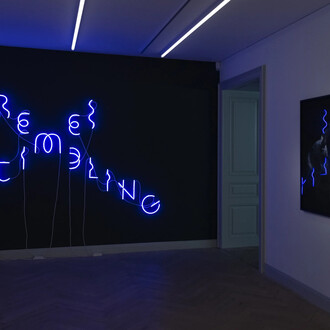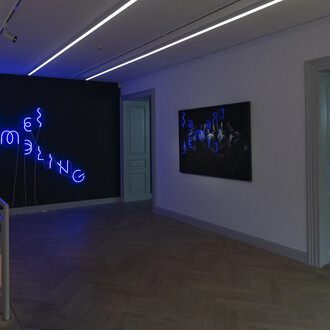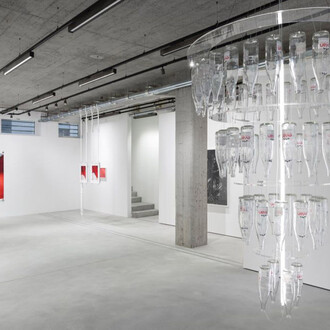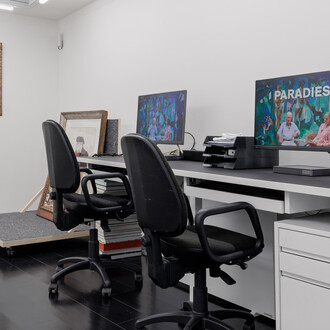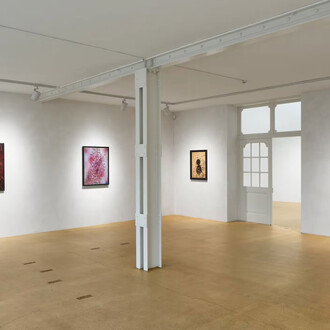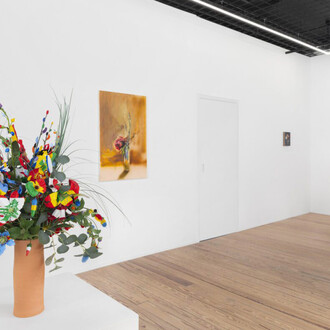A bed, or a light slipping through a blind, or a garden we’ve forgotten to fence off.
Lardy and Faulhaber, appear. Not quite together, not exactly apart in the exhibition space and present their works just close enough for their questions to echo each other's questions, without ever trying to align. These seemingly different positions, both paint from the periphery. From the edges of what we usually try to name. They don’t offer statements. They suggest, hesitate, circle around what resists clarity.
In her collages series, Gritli Faulhaber develops a pictorial language that seems to hold its breath. At first glance, these are quiet paintings, even though they are large scale, they seem to hide and appear eclectic. But the quiet is full. Surfaces pause mid-sentence. Bodies are absent, or nearly so. And yet, the room isn’t empty, everything speaks: the weight of fabric, the angle of a door left ajar, shadows that persist without anchoring.
Her images are laced with references: to music, fashion, and the folds of art history. There’s choreography behind the softness. The viewer is first pulled in through the atmosphere, then left to unravel composition, carefully, like translating a language you used to dream in. Augusta Lardy also moves in this space between presence and retreat, but from a different angle. Her paintings begin long before the brush touches canvas. The process unfolds slowly, internally, but when it comes, the act is fast. A sudden gesture backed by days of silence. As if something had finally gathered enough pressure to surface.
Her work enters a quiet dialogue with the landscape, but from an oblique angle, a landscape already in the process of dissolving. Her gestures are porous, vegetal. If Faulhaber frames absence, Lardy lets it grow. Her work speaks less in signs than in sediments: layers of memory, affect, and organic trace. She doesn’t declare her references, but they seep in like something rooted deep beneath the visible.
Both painters explore how to construct meaning without pinning it down. Faulhaber navigates between information and its refusal. Lardy between representation and its undoing. They approach the same question from opposite ends: how to create a space that stays open, that doesn’t resolve? How to let the surface speak without controlling the voice.
What they share isn’t a subject, but a way of circling around it: of letting representation remain porous, unsettled. In their work, the subject is always shifting, not absent, but never fully captured, like a discarded portrait It flickers in a fold, a shadow, a gesture held just long enough.
Maybe that’s the point: not to fix the image, but to let it breathe.
To leave room for what escapes framing, like something fenced in a garden, growing sideways.
(Text by Leila Niederberger)






